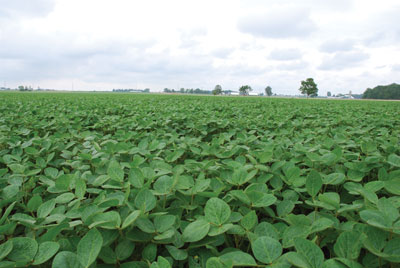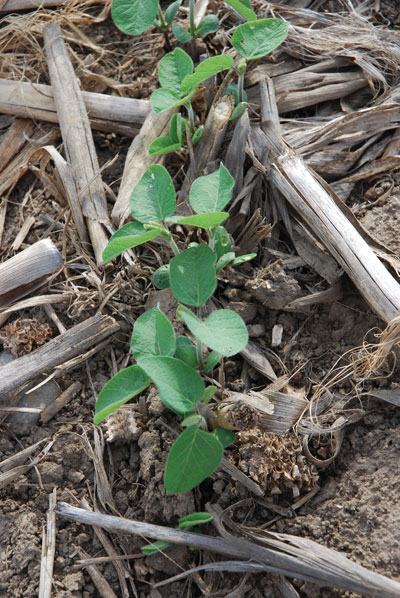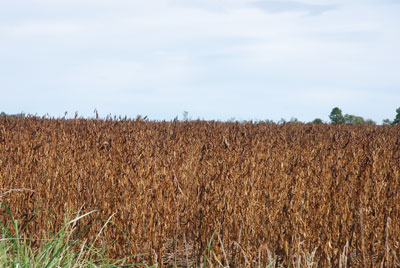
Features
Agronomy
Identity Preserved
Soybean variety improvement patents
In an effort to take some of the confusion out of the marketplace concerning seed patents, Pioneer Hi-Bred has launched a public education campaign as a guide for growers as they consider their 2012 seed purchases.
November 30, 2011 By Blair Andrews
In an effort to take some of the confusion out of the marketplace concerning seed patents, Pioneer Hi-Bred has launched a public education campaign as a guide for growers as they consider their 2012 seed purchases. Although partly driven by the recent patent expiry of the original Roundup Ready technology in Canada, the campaign also introduces the company’s plans to introduce new “Variety Improvement Patents” related to many of its commercial soybean varieties. The terminology is new for Canada, but variety patents are in place in the US. Sometimes referred to as utility patents, they cover the entire variety as opposed to a specific gene or trait such as glyphosate resistance.
 |
|
| The term “variety improvement patents” may be new Canada, but they are in place in the US. Often referred to as utility patents, they cover the entire variety, not just a specific trait.
|
For Ian Grant, president of Pioneer Hi-Bred, the awareness campaign is the first step in helping growers to understand and comply with the company’s conditions for using its seed products in the wake of the expiry of the original Roundup Ready technology.
His message is simple: Pioneer brand soybean seed is sold for a single use, meaning the seed cannot be saved in order to be planted in another year. “We don’t want growers to have any uncertainty on what they can and cannot do with our seed,” says Grant of the campaign. “Our policy is clear and we want to communicate it so everybody knows.”
To recap the changing climate in the seed marketplace this fall, the Canadian patent for the original Roundup Ready soybean technology expired in August 2011. Although ending just prior to harvest, the contractual obligations to not save seed under Monsanto’s Technology Stewardship Agreement (TSA) remain in effect for 2011.
 |
|
| There has been considerable confusion with the expiry of the original Roundup Ready patent, and Pioneer Hi-Bred is attempting to clarify the issue with variety, or utility, patents on its soybean technology. Photo by Ralph Pearce. |
In 2012, farmers may decide to save seed from the 2012 harvest for replanting in 2013, as long as the seed company from which they purchased the seed for 2012 planting does not have any contractual obligations preventing them from doing so. As part of the communication effort, Grant wrote a letter to growers, outlining Pioneer’s position on its seed sales for 2012.
In Pioneer’s case, the company is stipulating that its soybean seed is sold for single use, which is spelled out on the bag tag and included in the terms and conditions the customers receive each year.
In addition to making growers aware of the company’s policy, Grant says Pioneer also wants them to understand the rationale behind single-use seeds and the need protect the technology with patents.
He says single-use allows the company to continue to invest large amounts of money into its research and development programs, which in turn creates a pipeline of new products that help farmers increase their yields and productivity.
For example, Grant notes that it can take as long as seven years and an investment of over $1 million to bring a new soybean variety to the marketplace. “So for us, it’s about continuing to fuel that innovation pipeline by having the ability to protect our intellectual property and a way of enforcing single use. That’s what these patents do,” he says. “For farmers, it ensures there’s going to be continued investment in research and development that will provide them with newer and better genetics.”
According to Pioneer, the company has secured allowances for these new variety improvement patents relating to many of its newest soybean varieties. A news release noted that these pending Canadian patents are scheduled to be issued in 2011.
On the public sector side
For other soybean breeders such as Dr. Istvan Rajcan at the University of Guelph, the impact of patenting varieties on Canada’s agriculture industry remains to be seen. Noting that he has limited information about the new development, Rajcan says public breeders would be concerned if the patents were applied to non-GMO varieties that are important for Canada’s food-grade markets. “We have a consensus, at least among public breeders, that patenting life is not necessarily a good thing for the grower or anybody,” says Rajcan of patenting varieties. “It’s a specific set of genes that a plant variety, hence a living organism, has (and) it’s a result of selection in nature over a number of years and generations, with only the last few years being targeted for selection in a plant breeding program. But, it is still nature and it’s still life. I have a problem with that.
 |
|
| There is a lot of research that goes into a variety, whether it is from a private or a public breeder.
|
”Rajcan adds that he would not be concerned if the patents were applied to GMO varieties that contain a gene insertion, which has been patented as an event. “We have had this in place for a while now and it is probably irreversible,” says Rajcan. As for the benefits of single-use seeds helping to fuel innovation, Rajcan agrees with Grant’s comments.
“There is a lot of research that goes into a variety and, whether you’re a public or private breeder, further research into developing new varieties definitely benefits most by a grower going back and buying new seed rather than growing farm-saved seed,” he says.
At the same time, Rajcan also sympathizes with farmers who, especially after a bad year, would welcome the chance to plant bin-run seed as a way to save costs. “Right now, Canada’s Seeds Act allows for this exemption unless it is a GM variety which is grown under a Technology Usage Agreement and treated separately,” notes Rajcan. “It remains to be seen how the new patents would change this situation.”
As for Pioneer, building awareness about the issue will continue well beyond its initial outreach to growers.
In addition to the letter from Ian Grant, the company also launched a dedicated website to the cause – www.pioneersoybeans.ca. “If there are folks who are out of compliance, education is the first step to try to help them understand about intellectual properly and the benefits,” says Grant. “We’re going to take a fair approach with people. Education is going to be a big part of this.”